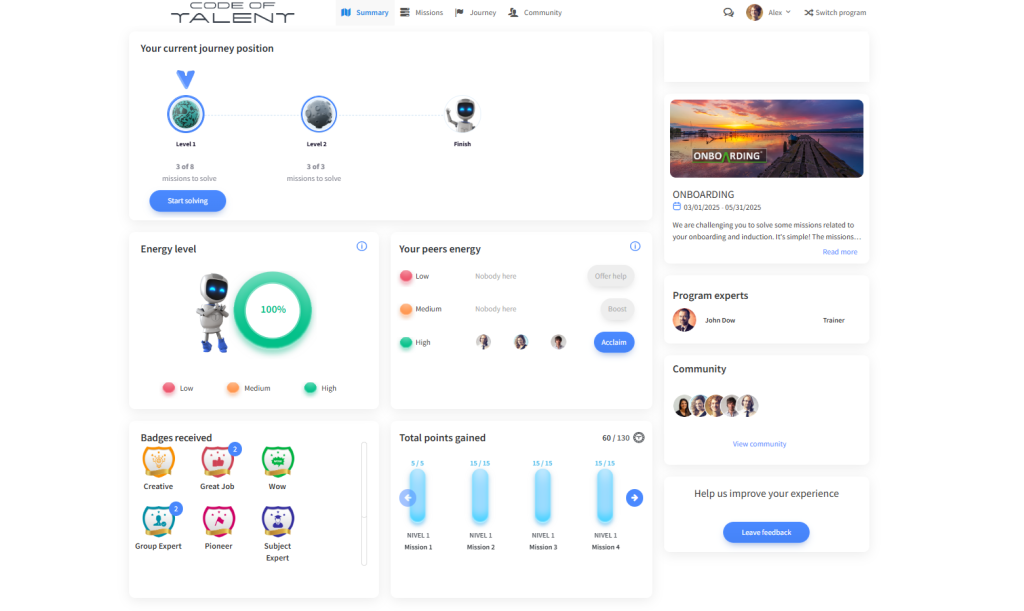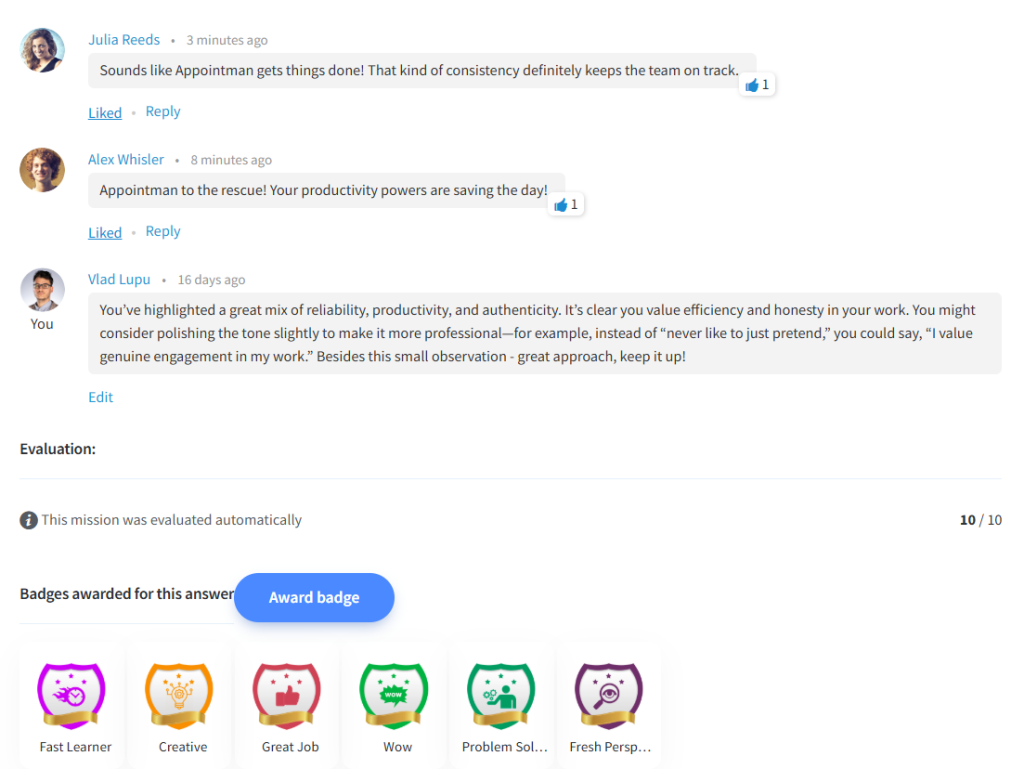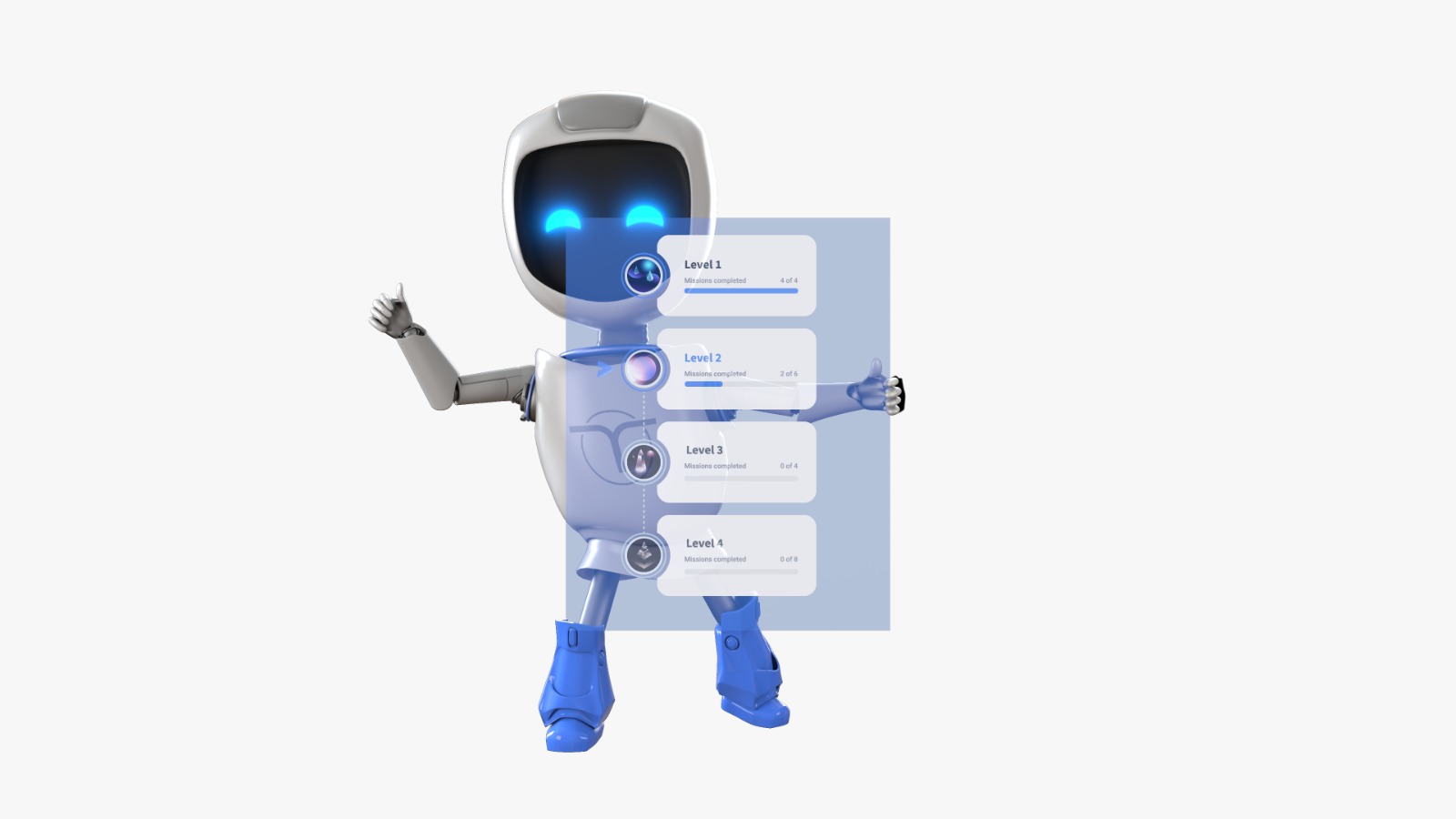Not all training that’s completed is truly learned, and most L&D teams know it. That’s why training engagement strategies are emerging as a more accurate benchmark than completion rates or attendance.
Engagement is a top L&D KPI for a reason: it tracks how people actually interact with training, not just whether they show up. This article explores why traditional training methods fall short for today’s learners and how innovative training engagement strategies address the real challenges of modern workplace learning.
Why Traditional Training Fails to Capture Attention
Before applying effective training engagement strategies, it’s important to understand why traditional training often misses the mark. Today’s learners face more distractions and less time than ever before. These challenges are barriers to learning that most training programs don’t account for.
Modern Challenges to Training
Disengagement isn’t always the fault of training itself. Many internal and external factors influence learner motivation, and some are beyond what L&D teams can control, even with the best training engagement strategies. Still, understanding these challenges is key to designing training that connects.
1. Short attention spans
One of the biggest shifts in recent years is how easily distracted we’ve become. A Microsoft study found that in 2000, people could focus for about 12 seconds. By 2015, that dropped to 8 seconds, shorter than the attention span of a goldfish.
That might sound like a joke, but for learning, it’s a real problem. Long training sessions just don’t hold people’s focus anymore.
2. Information overload
Then there’s the issue of information overload. In most workplaces, employees are constantly bombarded with:
- Emails
- Meetings
- Chat messages
- Updates.
A Gartner survey found that 38% of employees feel overwhelmed by the amount of communication they receive at work. If training is just more content added to the pile, people tune out fast.
In terms of training content, too much to learn at once overwhelms people, slowly turning the experience into a burden rather than an opportunity for growth.
3. Forgetting curve
Even when learners do engage with training, they’re likely to forget most of it. Research on the Forgetting Curve shows that we lose around 75% of new information within a day or two if it’s not reinforced.
That’s a big challenge for L&D teams, and one that traditional training formats rarely solve.
4. Dissatisfaction at work
When employees are unhappy with their job or the company, training quickly feels like just another chore on a long to-do list. If they don’t see a future for themselves at the company, motivation drops sharply.
In these cases, no engagement trick will work. People are focused on leaving, not learning. The only real solution is to listen, understand their concerns, and address the root causes of dissatisfaction before expecting them to invest in training.
5. Lack of time
Finally, there’s time. A Gallup survey shared by Forbes shows that 41% of employees say they simply don’t have time to learn at work. When learning is treated as something extra, on top of a full workload, it often gets pushed aside.
The Problem with Traditional Training
Many training engagement strategies fail before they even begin because the training itself isn’t built to engage. When the experience feels forced, outdated, or irrelevant, people disconnect quickly.
1. It feels like just another task
A lot of employees believe training is nothing else than another task to complete, not an opportunity to learn. This is also backed by a 2025 study by upGrad Enterprise that found that 75% of Indian employees only upskill when it’s mandatory. That stat reflects a bigger issue: people often do the bare minimum with training unless it’s imposed on them.
2. It’s boring and generalistic
Let’s be honest: much of traditional training just isn’t engaging. Slides, long videos, PPT presentations—it all blends together. When the content feels disconnected from real challenges or day-to-day tasks, it’s hard for people to care, let alone remember it.
3. It disrupts real work
Training often feels like it takes people away from their jobs. If someone’s juggling deadlines or dealing with a heavy workload, carving out time for training can feel like a burden rather than a benefit. Without clear value, training becomes the first thing to skip.
4. The systems don’t help
Clunky platforms, login issues, slow loading times, or needing five tabs just to launch a module, all of this adds more frustration to the situation. Outdated training systems make learning harder than it needs to be. If access becomes a hassle, people give up before they even start.
5. It’s enforced for the wrong reasons
Have you ever received an email from HR saying “Reminder to complete this training by 5 p.m. or your laptop login credentials will be suspended”?
Many companies push training because they’re required to meet compliance deadlines, not because they’ve designed something meaningful for employees. That pressure makes training feel like punishment, not development, and in the end, these desperate attempts to make employees complete training do more harm than good.
The Psychology of Engagement: What Keeps Learners Hooked?
To design training engagement strategies that actually work, we need to understand what motivates employees to learn by looking at the main adult learning principles:
- Adults need to see the purpose of what they’re learning
- They want opportunities for growth
- Content must feel relevant to their work
- Learning should build on their existing experience
- It needs to be practical and respectful of their time
- They want to feel respected and recognized
Let’s break these down.
Purpose
Training needs to feel like it serves the learner, not just the company. When employees see that training aligns with their challenges or ambitions, they’re more likely to participate and retain what they learn.
To build purpose into your training engagement strategies:
- Learn what employees actually need or struggle with
- Set clear training goals
- Make learning outcomes visible and personal
Opportunity
If training is positioned as a meaningful growth opportunity, it changes how people engage with it. For example, employees who’ve upskilled in the last three to five years report 1.7× more job security than those who haven’t. This kind of impact reframes training as something worth investing time and energy into, not because it’s required, but because it leads somewhere.
Framing learning as a growth opportunity means:
- Connecting training to career paths
- Communicating how it leads to real advancement
- Reinforcing that training is an investment in them
Relevance
Relevance is one of the fastest ways to build engagement. If the content doesn’t connect to a person’s actual work or department, it’s easy to tune out.
Make training relevant by:
- Personalize it to the role, team, or challenge
- Using examples from real work situations
- Aligning content with day-to-day tasks
Self-Experience
Adults bring a lot of experience into learning, which shouldn’t be ignored in building the best training engagement strategies. Methods like reflection, simulation, role play, and real-world scenarios help people process new concepts by linking them to what they already know.
Learning also happens socially. According to Bandura’s Social Learning Theory, people often learn by watching others, not just by doing. Creating space for employees to share their experiences and observe others makes training more interactive and human.
Practicability
Accessibility is a core part of any effective training engagement strategy. If training is clunky, hard to access, or demands long blocks of time to complete, it gets pushed aside.
Ways to make training more practical and accessible:
- Make it on-demand and mobile-friendly
- Break content into short, focused segments
- Allow flexible pacing without deadlines
Recognition
Finally, engagement increases when people feel their effort is seen. Instead of enforcing training with deadlines and reminders, try recognizing the time and thought people put into learning.
To build respect into your training engagement strategies:
- Avoid threats or pressure to complete training
- Recognize participation with a simple “thank you,” shoutout, or badge
- Let learners reflect and give feedback
Training Engagement Strategies That Actually Work
To improve learning outcomes, it’s crucial to use training engagement strategies that speak directly to how people learn best. Here’s a breakdown of some of the most effective approaches, complete with explanations and practical examples.
1. Gamification
The thrill of games and competition has made its way into modern training. Gamification means using game-like elements (such as earning points, badges, or climbing leaderboards) to make training more enjoyable and motivating.
In fact, studies show gamified programs can increase learner engagement by up to 60%, making training more effective and memorable.
Why it works:
- Creates friendly competition
- Provides instant feedback
- Makes learning feel less like work and more like fun
Examples:
- A sales team earns points for completing modules, with top performers displayed on a leaderboard.
- Employees collect badges for mastering different skills, which can be shown on their profiles.

2. Microlearning
Microlearning breaks content into short, focused lessons of just a few minutes, which helps learners absorb information without feeling overwhelmed.
This method reinforces key ideas over time, combating the well-known Forgetting Curve. For instance, a 2017 NCBI study found mobile-based microlearning significantly improves retention by spacing learning and reintroducing information.
Why it works:
- Fits easily into busy schedules
- Helps learners focus on one concept at a time
- Combats short attention spans as microlearning sessions are no longer than 7 minutes
Examples:
- A daily 5-minute video explaining one new feature of software.
- Bite-sized quizzes delivered via mobile app after each lesson.
3. Social Learning
Social learning encourages people to learn by interacting with peers—sharing knowledge, asking questions, and observing real-world behaviors.
Why it works:
- Encourages collaboration and community
- Reinforces learning through discussion
- Allows modeling of real-life scenarios
Examples:
- Internal forums or chat groups to share tips and solve problems.
- Peer mentoring programs that pair new hires with experienced employees.
The feedback feature used by microlearning platforms where learners can comment on each other’s progress

4. Accessibility
Making training easy to access ensures it fits naturally into employees’ workflows rather than disrupting them.
Why it works:
- Respects learners’ time and workload
- Supports learning anytime, anywhere
- Reduces frustration with tech barriers
Examples:
- Mobile-friendly microlearning sessions employees can access during breaks.
- On-demand video libraries searchable by topic.
- Platforms with single sign-on to avoid login hassles.
5. Interactive Formats
Active participation in training helps learners stay focused and apply knowledge accordingly. This hands-on approach helps learners retain skills more effectively by engaging them directly rather than just passively watching or reading.
Why it works:
- Improves focus and attention
- Provides practice and feedback
- Builds confidence through practice
Examples:
- Simulations where employees navigate real-world scenarios.
- Polls or quizzes after video lessons.
- Role-playing exercises.
Modern learning platforms have a plethora of formats to deliver training programs. Below is a list of microlearning platform Code of Talent’s menu of training formats, which includes 10 types of missions, each targeting different skills and learning styles.

6. Just-in-Time Learning
Delivering training exactly when it’s needed cuts through overload. This is called just-in-time learning and has been around since the 1970s. Quick how-to videos, searchable knowledge bases, or chatbots providing instant support help learners solve problems on the spot.
Why it works:
- Provides immediate value
- Avoids overloading employees with too much upfront info
- Supports problem-solving in real-time
Examples:
- Short how-to videos accessible at the workstation.
- Searchable knowledge bases with FAQs and quick guides.
- Chatbots or virtual assistants offering instant help.
7. Awards
Recognizing learners for their effort increases motivation and reinforces positive behavior. Reward systems transform training into a rewarding experience, which encourages learners to keep participating actively.
Why it works:
- Builds pride and accountability
- Encourages ongoing participation
Examples:
- Digital badges displayed on employee profiles.
- Certificates for completing courses or milestones.
- Public shout-outs during team meetings or newsletters.
How to Measure and Improve Training Engagement
You can’t improve what you don’t measure. Engagement is about how learners interact with content and whether that interaction leads to learning that sticks.
Tools like quizzes, learner surveys, performance data, and platform analytics can give you a more complete picture. From there, you can adjust content, formats, or delivery methods to improve results.
Some key metrics to track:
KPIs | What to track |
Completion rates | Are people finishing courses or dropping off midway? |
Time spent learning | Are they skimming through, or staying with the content? |
Participation in discussions or activities | Are they engaging beyond passive viewing? |
Knowledge retention or application | Can they recall or use what they learned later? |
Feedback and satisfaction | Do learners feel the training is valuable and relevant? |
Using Code of Talent for Training Engagement
Code of Talent helps L&D teams create training programs people actually want to complete. The platform makes it easy to:
- Build microlearning content with the help of AI
- Layer in gamification
- Offer real-time feedback
- Support social learning
If you’re looking to improve completion rates, increase knowledge retention, or simply build training engagement strategies that feel relevant and modern, Code of Talent gives you the flexibility and tools to make that happen. Try Code of Talent for free and start designing training people choose to engage with!
Cover photo: Freepik





